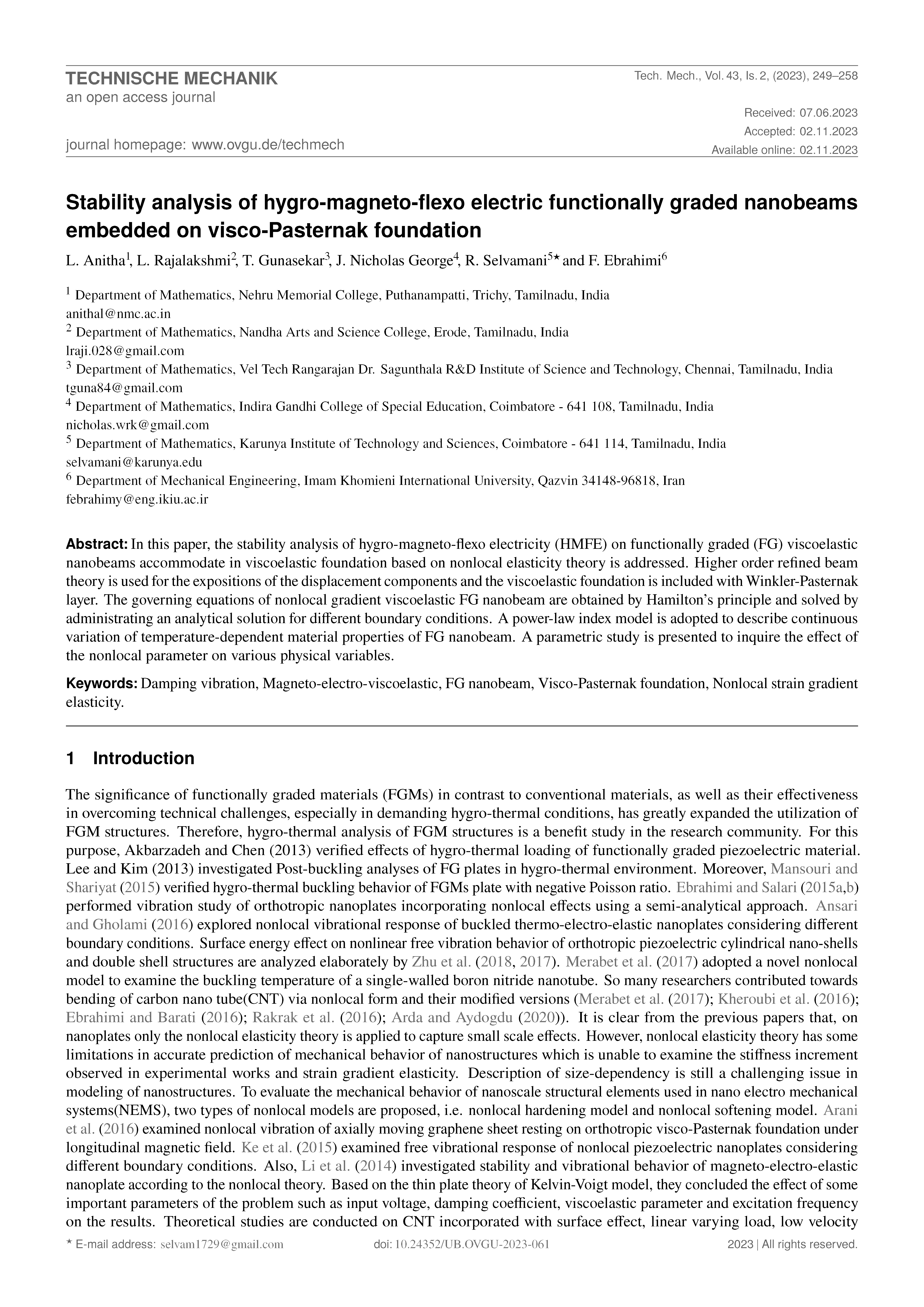Stability analysis of hygro-magneto-flexo electric functionally graded nanobeams embedded on visco-Pasternak foundation
DOI:
https://doi.org/10.24352/UB.OVGU-2023-061Keywords:
Damping vibration, Magneto-electro-viscoelastic, FG nanobeam, Visco-Pasternak foundation, Nonlocal strain gradient elasticityAbstract
In this paper, the stability analysis of hygro-magneto-flexo electricity (HMFE) on functionally graded (FG) viscoelastic nanobeams accommodate in viscoelastic foundation based on nonlocal elasticity theory is addressed. Higher order refined beam theory is used for the expositions of the displacement components and the viscoelastic foundation is included with Winkler-Pasternak layer. The governing equations of nonlocal gradient viscoelastic FG nanobeam are obtained by Hamilton's principle and solved by administrating an analytical solution for different boundary conditions. A power-law index model is adopted to describe continuous variation of temperature-dependent material properties of FG nanobeam. A parametric study is presented to inquire the effect of the nonlocal parameter on various physical variables.

Downloads
Published
How to Cite
Issue
Section
License
Copyright (c) 2023 L. Anitha, L. Rajalakshmi, T. Gunasekar, J. Nicholas George, Rajendran Selvamani, F. Ebrahimi

This work is licensed under a Creative Commons Attribution-ShareAlike 4.0 International License.




